
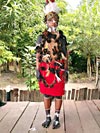 |
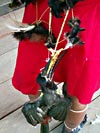
|
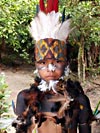 |
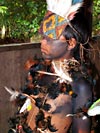 |
|
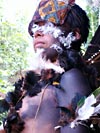 |
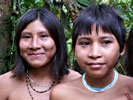
|
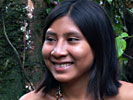
|
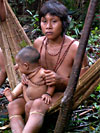 |
|
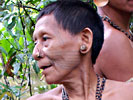
|
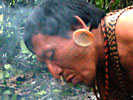 |
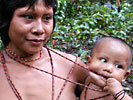 |
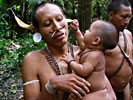 |
|

|
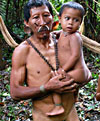
|
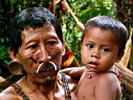
|
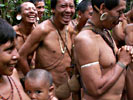 |
|
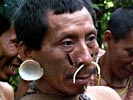
|
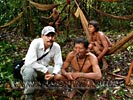
|
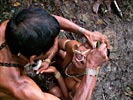
|
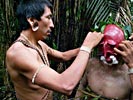
|
|
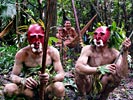
|
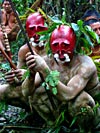
|
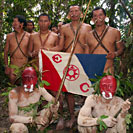
|
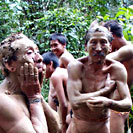
|
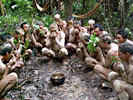 |
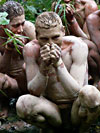
|
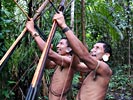
|
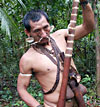
|
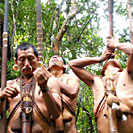
|
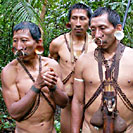
|
An Explorers Club
expedition in cooperation with
Amazon-Indians.org visited various indigenous people of the Amazon in Peru, Brazil, and
Colombia. This was an official "flag expedition" that documented
various Amazon native tribes (Matis, Ticuna, Matsés-Mayoruna, Marubo, and Yagua) in the Tres Fronteras area
(three frontiers of Brazil, Peru and Colombia).
The expedition leader was Dr. Dan James Pantone, the editor of
Amazon-Indians. Dr. Pantone documented the journey to
these Amazon Indian tribes with both photography and videography. Some of
the Explorers Club expedition photographs are accessible using the thumbnails above. Other can be
obtained by contacting
Dr. Pantone via email. Although the Matis people normally live on the
Brazilian side of the Yavarí Valley, these photos of the Matis Indians were
actually taken in Peru. Being hunter-gatherers, international borders have
little meaning to this Amazon native tribe. Photographs of the Ticuna
tribe were taken in Colombia near a tributary of the Amazon River.
The photographs of the Ticuna (sometimes spelled Tikuna) Indian girl demonstrate the Ceremony of Pelazon
(Moça Nova in Portuguese), an
important rite of passage that all Ticuna girls must fulfill. The course
of the pelazon is a long and difficult one. For a period of up to a year
before this Amazon native tribe ceremony, the girl is kept in isolation, with
only her mother and her female "teachers" allowed to see her. After this
period of isolation and education about her responsibilities as an adult member
of the Ticuna tribe, the actual Ceremony of Pelazon begins. During a
traditional Pelazon, all the girl's hair is pulled out by hand, strand by strand.
Next, her body is painted black with a black dye extracted
from fruit of the huito tree, Genipa americana. The girl
illustrated in the above photos, is a member of a Ticuna "bird clan," hence the
toucan hanging from her belt. Intermarriage within a clan is not
permitted, a common theme among indigenous people of the Amazon.
Note the downy feathers that cover her eyes at the beginning of the ceremony.
Covering eyes during native Amazonian ceremonies of girls is quite common,
a good example being the Ritual of the Flutes by Xingu Indians.
In the above Explorers Club photo gallery, the Matis Indians demonstrate two different ceremonies - the Ceremony of Mariwin
and the Ritual of Capybara. In the Ceremony of Mariwin, the Matis cover
their bodies with clay and decorate themselves with green foliage and ferns.
In addition, they wear red masks.
The masked beings represent "ancestral spirits" which are non-human, unable to
talk. Instead they make eerie animal-like sounds. Some
anthropologists say that the Mariwin ceremony is used to teach children to behave,
and in fact, some children who have recently
misbehaved are often whipped with sticks by these masked beings. However,
Mariwin is much more than teaching children to behave and the Matis believe that
the masked beings actually transfer "spiritual energy" to the recipient. During the
Ritual of Capybara, the participants (exclusively males) cover their bodies with wet clay and
imitate
capybaras (Hydrochoeris hydrochaeris) which is the world’s largest rodent.
Matis ceremonies, like their religion and medicine, emphasize animals and animal
spirits, a common theme among indigenous tribes of the Amazon.
Documentary films and additional photos of this journey to the Matis, Mayoruna, Marubo, and Ticuna Indians are
available on DVD and download. If you would like to
correspond with the author about Amazonian tribes and propose ideas on
preserving their cultures, please email
editor@amazon-indians.org.
The photographer, Dr. Dan James Pantone, is the editor
of Amazon-Indians.org. Moreover, he is an ecologist
and the founder of
the Movement in the Amazon for Tribal
Subsistence and Economic Sustainability (MATSES),
a nonprofit
association that is providing aid to Amazon native tribes in order
that they can conserve both their traditions and territory in a free and
self-sufficient manner.
Dan James Pantone, Ph.D. organized
and led this expedition.
For more
details, please email Dr. Pantone at
djpantone@amazon-indians.org
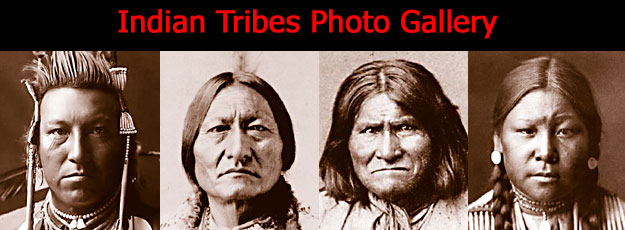
| Return to Main Page | Previous Page | Next Page |